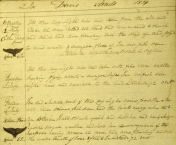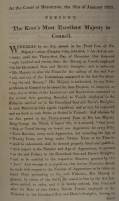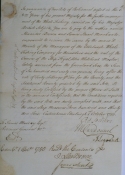Whaling Home | A Chill Reminder | Next
The Early Years

Most Scottish ports began whaling around the early 1750s. The blubber of the whales was made into high quality oil by boiling and rendering. Before the discovery of mineral oils, whale oil was an invaluable product with a great many uses. For example, it lit many of our city streets until the early 19th century when coal gas was introduced as a cleaner and inexpensive form of power.
The early whaling ships were encouraged by government subsidies known as bounties. These were paid to every ship of 200 tons or more that sailed to the arctic seas in search of whales. To qualify for the bounty, the whaling ship had to follow strict rules. The ship had to leave port at a certain time and had to keep a logbook giving details of the voyage.

The master had to note their position every time they saw land or caught a whale. He also had to take soundings. As well as that, the whaling ship had to carry a number of Greenmen. These were men that had never been to sea before. Later, a Greenman was defined as a man who had never been on a whaling ship before.

The Tryal was a Leith whaling ship owned by the Edinburgh Whale Fishing Company. She made a voyage in 1750 and various documents relating to this remain. The necessary conditions were met and the bounty payment to the Company has therefore been authorized. The total payment was £660, which was 40/- per ton of the vessel's weight.